Almost on the border with Switzerland, between the upper edge of Lake Maggiore and the Toce River, on a gentle plateau around 800 meters above sea level lies Val Vigezzo, also known as the Painters’ Valley. We are in Piedmont, at the foothills of the Ticino and Verbano Alps, the gateway to the Val Grande National Park, the largest unspoiled area in Italy, and Val Vigezzo is one of the valleys branching off from Val d’Ossola with the distinction of not having a single stream running through it from beginning to end: there are instead no less than two streams (Melezzo and Melezza) that flow in opposite directions generating that plateau on which the main settlements rise, surrounded by a crown of high peaks, including the Pioda di Crana, Pizzo la Scheggia and the nearby Monte Rosa chain that make the view of the panorama from below of great grandeur. The richness of fauna and vegetation that with its colors in the various seasons of the year gives atmospheres of great intimacy and abandonment that enchanted many artists who stationed here and used it to paint their works (a style strongly related to Romanesque art). This is why it is also called the Valley of the Painters: Giuseppe Mattia Borgnis, Lorenzo Peretti, Enrico Cavalli, Giovanni Battista Ciolina, Carlo Fornara, and Maurizio Borgnis are these artists. Their works are preserved at the Rossetti Valentini School of Fine Arts in Santa Maria Maggiore. There are 7 municipalities in the valley: Craveggia, Druogno, Malesco, Re, Toceno, Villette and Santa Maria Maggiore. There are 15 bicycle and pedestrian paths in the valley, but in winter it is the snow and what is related to it that makes the valley rotate. It is the place for a peaceful vacation: here are ten places you should not miss during your stay.
Santa Maria Maggiore is the most important center of the valley, since Roman times, and is considered its political and religious capital since it was the seat of the Mandamento from which the Praetor of the Valley exercised his jurisdiction, and of the Matrix Church, from which the parishes of all the villages were detached. In Santa Maria Maggiore there is a church, that of Santa Maria Assunta, founded in the 4th century and is considered the most beautiful in the Ossola Valley. Santa Maria Maggiore is also a tourist landmark thanks to its sports and ski-lift facilities and services (in fact, the Val Grande National Park Visitor Center information point has been located here) and with the stores in the village’s alleys that have seen the proliferation of high-fashion boutique windows. Unlike the years when people emigrated from here only to go look for work elsewhere, now people come here to live well. It is considered one of the most beautiful villages in Italy and has been awarded the “Orange Flag” by the Italian Touring Club and is therefore a popular tourist destination well known for example for its Christmas markets and the international gathering of chimney sweeps (who also have a dedicated museum) that takes place in September.
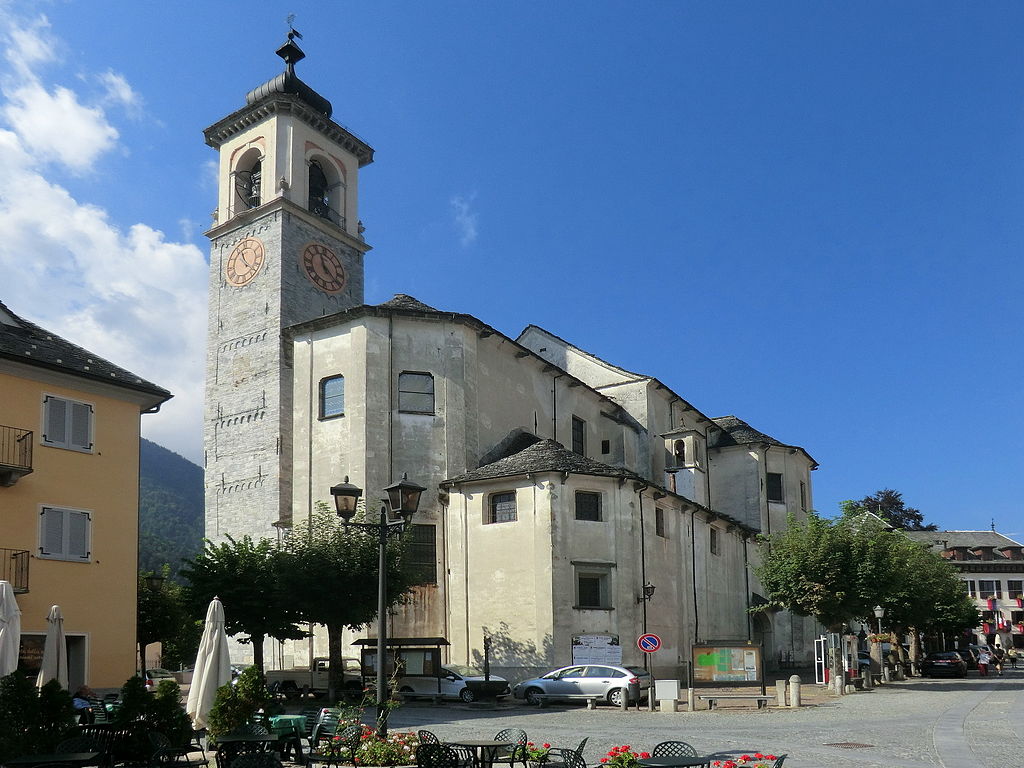
The history of Santa Maria Maggiore, like that of the entire valley, is one of emigration: many in search of work left everything to go to Holland, Switzerland, Sweden and Germany to work as chimney sweeps. So that this important piece of Vigezzo people’s lives would not be lost, the Chimney Sweep Museum was opened in 1983. It is located in what used to be a carriage house in Villa Antonia, today’s City Hall. The soul of the project and the manager of the museum is the National Association of Chimney Sweeps, also the promoter some 40 years ago of the annual Chimney Sweep Gathering, which aims to recall those who, children, grandchildren and artists (a thousand each year from all over the world) left to try their hand at this craft. Objects, tools, now-obsolete clothing, pictorial works: this is what the museum collects along with a modern interactive and multi-sensory tour that allows you to relive a “chimney sweep” experience: you put on a helmet with headphones and goggles and live an experience that is no longer present. The most special place to visit in the entire Ossola Valley, visited by more than 10,000 people each year.

Another charming and unique destination to visit in Santa Maria Maggiore is the Feminis-Farina Perfume House. It is a museum established in 2018 that honors Giovanni Maria Farina and Giovanni Paolo Feminis, who are considered the fathers of modern perfumery. In the seventeenth century, Paolo Femenis emigrated to Germany and invented Eau de Cologne, named after the city where he resided, but with initial medicinal purposes given its soothing properties, and at the time he called it “the Aqua Mirabilis.” But after crossing paths with a fellow citizen of St. Mary’s who had emigrated to Maastricht, Holland, to be a merchant, Giovanni Maria Farina, Eau de Cologne became a luxury product, internationally known, thanks to his marketing business that Farina set up upon Feminis’ death in 1736, changing the name to Eau de Cologne. “My perfume,” Farina wrote, “is like an Italian spring morning after the rain: it recalls the oranges, lemons, grapefruits, bergamots, cedars, flowers and herbs of my land.” The museum, in Piazza Risorgimento, is also an important study center for the creation of new fragrances and is a collection of testimonies that guide visitors to discover the emigration of the Valley’s inhabitants and the history of Acqua di Colonia, which begins in a greenhouse housed in the Aroma Garden (dedicated to the essences that made up Aqua Mirabilis). A typical Italian story between genius and pragmatism that between anecdotes and scents makes it a pleasant place to discover.

Before the Loana stream flows into the Melezzo River, near the village of Malesco, beautiful jets of water form, three consecutive jumps, which take the name “Cascate dei Camini.” The Chimney, along with the Chimney Sweep, is somewhat of a modern symbol of this valley. The high elevation makes the water nice and cool, and in summer it is a good place for some refreshment. In winter the waterfall becomes a large sheet of ice. It can be reached from Malesco and Santa Maria, on foot and by bike, also via a suspension bridge over the Loana stream.
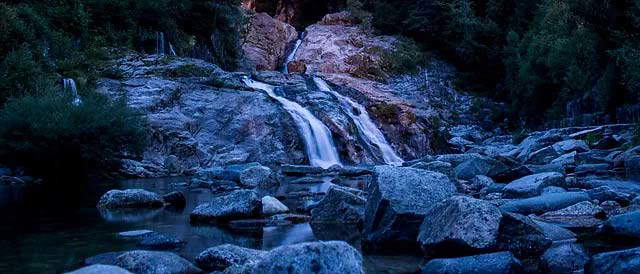
In keeping with the tradition of emigration and chimney sweeps, the town of Malesco pays tribute to this figure with a bronze statue in the main square. It was erected in 1983 and depicts Fausto Cappini, who died when he was just 13 years old after touching high-voltage electrical wires while leaning out of a chimney at the end of cleaning. A museum has also been created in this municipality to tell the story of the Valley from prehistory to the twentieth century: theRegional Ecomuseum and Leuzerie and Scherpelit, that is, of Soapstone(Leuzerie in the Malesque dialect) and of Stonemasons. The wealth of this area has been stone (from the marble quarries to the soapstone to the rocks of the waterfalls that define the profile of this territory), and through its history one grasps the narrative of this valley and this community. Soapstone in particular is found in abundance, and because of its peculiarities it has been widely used since time immemorial, starting with the making of fireplaces, stoves and leviz, that is, “pots” used to heat food since Celtic and Roman settlement times. And there are many Roman artifacts found in tombs, various furnishings, and along a pavement of an ancient street.
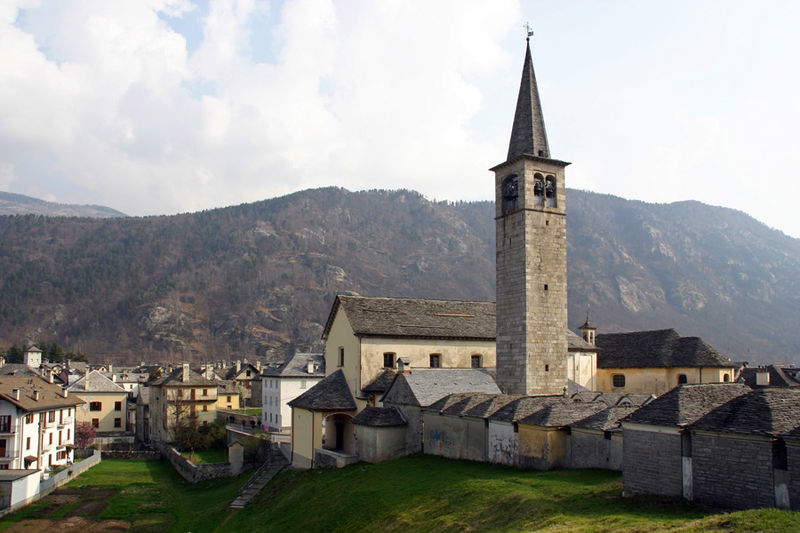
On April 29, 1494, a man threw a stone at the frescoed image of Our Lady in the church of San Maurizio, and the image began to bleed for three weeks, and many sick and infirm people experienced healings and miracles by being bathed in blood. This miraculous event turned that place into a shrine and made Re a devotional center of pilgrimage. But in order to have a temple worthy of the miracle that could contain the flow of pilgrims who came there even from Switzerland it took 1606 to enlarge the structure (in Corinthian style with a single nave) and then 1922 to build the Shrine. Monumental and majestic at 51 meters high, it is one of the most important buildings of worship in Piedmont. Numerous votive offerings over time were later placed in the Shrine Museum, located above the sacristy, which collects those most valuable from a historical and artistic point of view: in addition to tablets, embroideries and paintings, there is also a painting with a golden heart. It is a vow to the Virgin dating back to 1898, by the parents of children affected by a very serious epidemic of diphtheria. The original fresco is preserved inside the oldest part of the shrine, an imposing structure around which the town of Re developed. The image of Our Lady of Re is a Madonna of Milk, depicted in a Byzantine Romanesque style typical of the years between the 13th and 14th centuries. The fresco shows the Madonna seated on a throne with Baby Jesus on her knees, in her right hand three roses, the “flower of virgins,” and the symbol of the Rosary. A cartouche at the bottom explains the theological significance of Mary’s mission: “In gremio Matris sedet sapientia Patris” (“In the Mother’s lap lies the wisdom of the Father”). The author is unknown.

Craveggia is a bit like the pearl of the Vigezzo Valley, both for the architectural style of the buildings, among alleys and stone roofs full of chimneys, and for the presence of a real treasure. A town of less than 800 inhabitants, it is a very genteel hamlet with elegant buildings decorated or frescoed on the outside, with three churches and a fine baptistery. One hamlet is the birthplace of Carlo Fornara, a leading exponent of internationally renowned pointillism. From here, and to be precise from Prestinone di Craveggia, an 8-passenger gondola lift departs at an altitude of 825 meters to reach reaches the Piana di Vigezzo station at 1726 meters. In addition to skiing with slopes for all tastes and difficulties, you can also paraglide being able to observe the surroundings from the sky with a unique experience. Many itineraries start from here for biking or trekking.
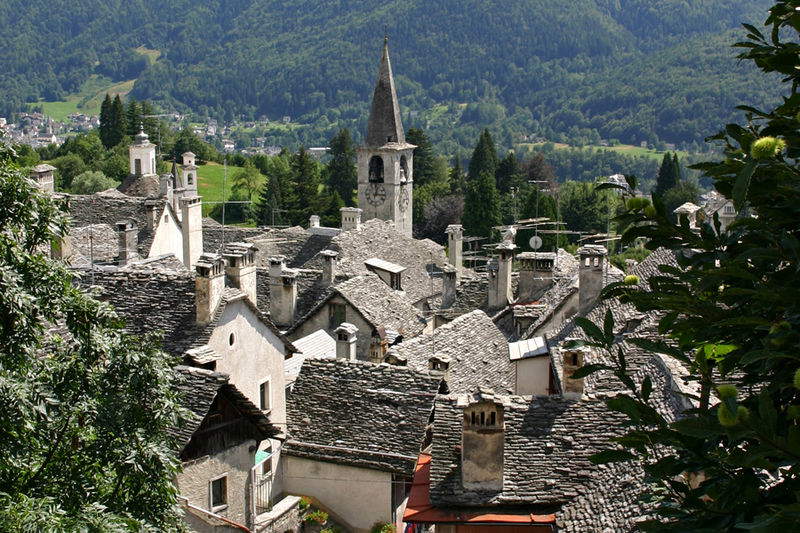
It may seem unbelievable, but in this small village in the Alps there is a real Treasure of inestimable economic, historical and religious value: in fact, we are talking-just to name a few-about objects such as the funeral mantle of Louis XIV, decorated with gold and silver and adorned with precious gobelins, and the cope made from the wedding mantle of Marie Antoinette, the Queen of France. This is the Treasure of Craveggia, kept in the parish church dedicated to Saints James and Christopher, which has accumulated objects of various kinds since the 16th century. There are, for example, paintings on copper plates attributed to the Flemish Pauwels Franck and from the Royal Chapel in Versailles with episodes from the Life of Jesus; a gold vermeil monstrance, 85 centimeters high and studded with gems; liturgical chasubles in antique silks embroidered with gold and silver; the “dagger” and “Crown” of Our Lady of Sorrows inscribed with the Seven Mysteries, both in gilded silver and gems; a chasuble woven in gold; a fourteenth-century crucifix with the Four Evangelists carved in embossing; a silver astylar cross garnished with ten amethysts; the ray of the “Baby Jesus” in gilded silver, with central topaz and four rubies; a group of nativity figurines, carved by local craftsmen in the 18th century, with period costumes and cloths; an antique drape with hand-painted flowers on silk, encircled by two silver lanterns; chalices, pyxes and crosses decorated with precious stones, vestments and sacred objects. The treasure is all the result of donations and acts of devotion.

The Val Grande National Park is the only European natural area that fully preserves original environmental features and as Teresio Valsesia, journalist and writer, described it, “It is not only a kaleidoscope of nature, but an exceptional open-air museum of Alpine culture.” It is the most pristine area in Italy, covering 15,000 hectares. It is accessible only through passes and trails that can be hiked in fine weather in the company of a guide. A starting point for hiking is on the east side of Monte Rosa, the second largest mountain in the Alps. Its being so inaccessible is the strength of its habitat: we are talking about boundless spaces left wild, abandoned by man to its natural course, to the proliferation of biodiversity, with no roads or human settlements even seasonal. Here the masters are flora and fauna, and harmony with silence gives sensations now vanished from the cities.
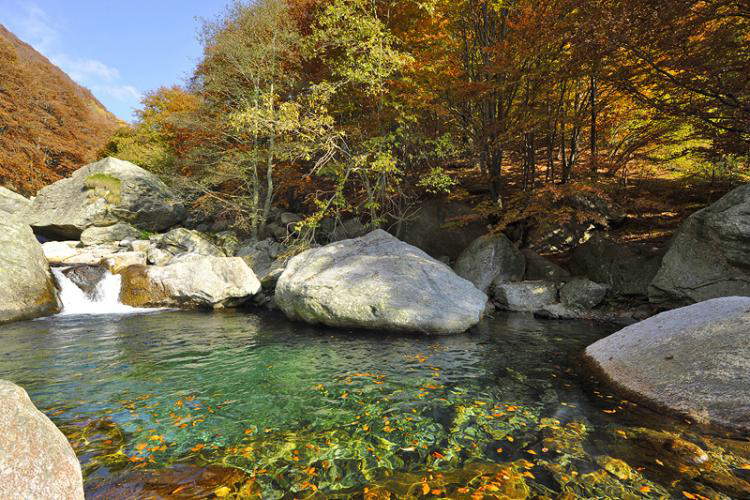
A gondola takes you to the Piana di Vegezzo ski resort at 1726 meters above sea level: here the panorama sweeps from Mount Rose to the peaks of the Val Grande. This is one of the opportunities offered by Piana di Vigezzo, in a pre-Alpine setting with large pine forests and grasslands with the mountains as a backdrop. More than 20 km of ski slopes and many facilities for winter lovers. The long Toce Cycle Route also passes through here: the route starts at the mouth of the Toce and then crosses the entire river plain between Bassa and Alta Ossola until it reaches Domodossola. With the “Vigezzo by bike” circuit, the Vigezzo Valley also lends itself well to family rides on the flat, thanks to a constant altitude of about 800 meters. For young and old alike, there is also the Vigezzina-Centovalli Railway: a little blue and white train with tracks immersed in nature from one village to the next (as far as Locarno in Switzerland) passing through forests, bridges and tunnels: just the slow discovery of an eco-sustainable journey of these beautiful mountains.
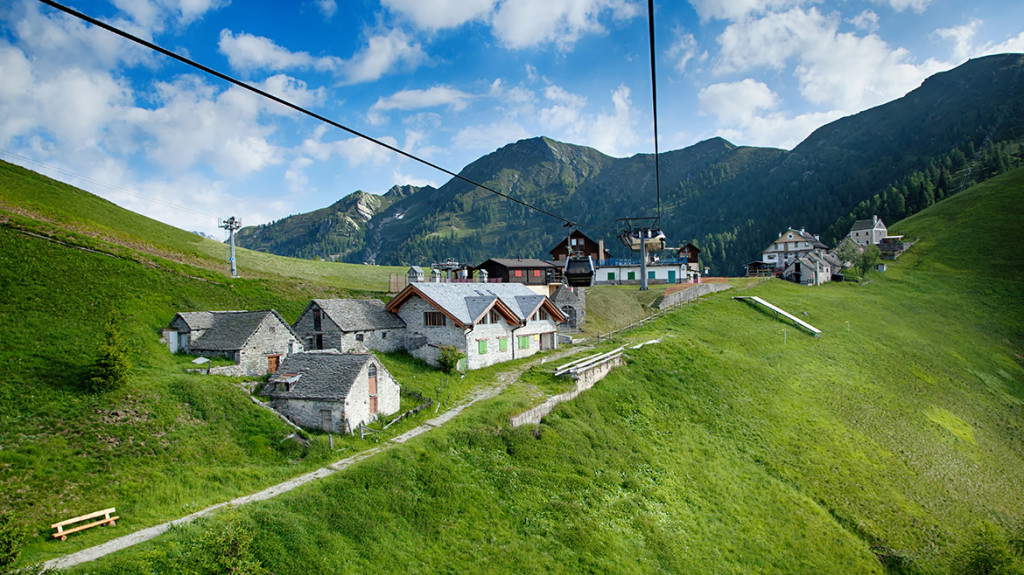
 |
| Vigezzo Valley, what to see: 10-step itinerary |
Warning: the translation into English of the original Italian article was created using automatic tools. We undertake to review all articles, but we do not guarantee the total absence of inaccuracies in the translation due to the program. You can find the original by clicking on the ITA button. If you find any mistake,please contact us.